I made a documentary about Scary Stories to Tell in the Dark. (Now available to watch.) The three books consisted of over 80 stories of folklore and urban legends. It was impossible to appropriately address each and every story in a single documentary. This website, in part, is a chance to look at individual stories that I researched, tales in which I learned about their origins and social contexts. It’s a chance to examine stories that I ultimately found to be fascinating in some way or another.
This is The Wendigo.
There are many boogeymen of storytelling past that have endured over the years. Many of them are creatures that became embedded in the folklore of a region and stood the test of time. One of them that has seen an interesting resurgence in movies, books, and TV is the Wendigo.
What is a wendigo? The wendigo is a mythical creature or spirit that originates and is strongly connected to the oral tradition of Native American and First Nation regions. Visually it is often depicted as being a cross between human and deer, moose, or bear, and usually carnivorous and bloody. While pop culture sometimes associates it with Yetis and Bigfoot, that oftentimes strays from the Wendigo legend’s original form.
As is described in the wendigo’s origins, in fact many of the original stories have it starting as a human and slowly becoming a giant with a frozen heart, succumbing to cannibalistic urges from the long wintry months of isolation. While it can be described as a physical creature, in other stories it is more supernatural or even psychological, strongly associated with winter, coldness, famine, starvation, and eventually the hunger that results in cannibalization.
While wendigo lore goes back to at least the 19th Century, the creature appeared in print numerous times, which helped it become an ever-growing storytelling device for many who were drawn to it.
The Origin of the Wendigo Legend
While we use the word wendigo here, the word has many variations from many different Algonquin-speaking Native American tribes: Wiindigoo, Wīhtikow, Wetiko, Wiindigoo, Weendigo, Windego, Wiindgoo, Windgo, Windago, Windiga, Wendego, Windagoo, Widjigo, Wiijigoo, Wijigo, Weejigo, Wìdjigò, Wintigo, Wentigo, Wehndigo, Wentiko, Windgoe, Wītikō, and Wintsigo.
As is usually the case, folklore cannot be tied to one specific version, place, or person. It is important to record them, let them live on, but it’s impossible to find any particular origin beyond zeroing in on a general time (1800-1900s), region (North America), and people (Algonquin-speaking Native Americans).
Here are just a few stories that involve the wendigo legend that have been recorded and told by folklorists and Native storytellers:
- The Ojibwe Who Slew the Wiindigo
- The Wendigo Baby
- The Dog and the Windigo Spirit
- Audio of a Cree elder telling stories of the Wendigo
As is the case with popular culture, a story that involves a “monster” is usually morphed into a more vague boogeyman, rather than the underlying meaning and metaphor that relates to the monster or spirit… in the case of the Wendigo legend, that of isolation, sanity, and the breakdown of social mores in the form of cannibalism.
“The windigo of pop culture often gets most everything about the windigo wrong,” says Brady DeSanti, a professor of religious studies at the University of Nebraska, “including the depictions of Native Americans and First Nations communities. According to most Native American Wendigo legend, the physical form of a windigo is often said to be human-like. Over time, it becomes a giant. In some stories, the windigo has a heart of ice, and is so hungry for flesh that it chews its lips off. Conversely, when the windigo appears in North American pop culture, it is usually likened to a werewolf, vampire, Yeti, or some combination thereof.”
Sightings of the Wendigo
To take a more scientific and even cryptozoological perspective, it is possible to look at and examine real-world sightings of wendigos over the years.
Many of the most famous cases of wendigo sightings are held up as “true crime” examples of insanity among Native Americans of the 1800s and after. It has famously been termed Wendigo psychosis by some in the field. Modern psychologists would go on to consider that the idea of Wendigo psychosis is a flawed term from early anthropologists, one that would be more appropriate to classify or attribute to a number of different varying psychotic behaviors.
There is the case of a Cree trapper named Swift Runner in 1879:
According to accounts, he wandered alone into the Catholic Mission in St. Albert in the spring of 1879, claiming to be the only member of his family who didn’t starve to death over a particularly cold, bitter winter. The priests became suspicious when they realized that Swift Runner, who weighed around 200 pounds, didn’t seem malnourished at all and was plagued with screaming fits and nightmares as he slept. He told them he was being tormented by an evil spirit, called Windigo, but said little else about it.
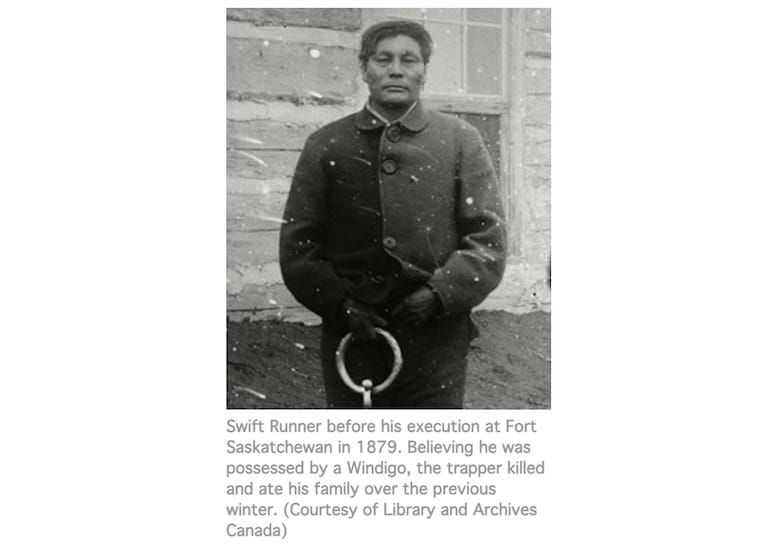
There is the case of Jack Fiddler a man of the Sucker people of Sandy Lake who reportedly hunted and cured people of Wendigoism. When he killed one supposed Wendigo, he was tried and convicted of murder, and was either executed or committed suicide depending on the varying reports.
As for modern Wendigo sightings, here is a collection of them that have been reported.
- Minnesota: Chad Lewis describes, “there are several sightings of it in Minnesota from Lake Wendigo, but also Ross up near the Canadian border by Warroad and Roseau.”
- Michigan: A User Submitted Sighting at Pine Barrens Institute, “I only caught the tail of the creature, seeing a pale, long and uncomfortably thin leg before it seemed to vanish behind the wide trunk, despite most of the leaves already being gone.
I asked my brother what he had seen, but he seemed too disturbed to answer.” - Ontario: Strange sounds heard in northwestern Ontario resulted in new reports, “the footage also prompted speculation that it offered evidence of the Sasquatch (also known as Bigfoot) or Wendigo, two legendary cryptids said to roam the hinterlands of Canada.”
- North Dakota: An experience is shared with readers on the website Pararesearchers.org, “From what I saw it would have been about 10 feet tall, it kind of hunched over, it was very thin, it had extremely long pointed fingers and toes and it had a little bit of shaggy hair on its head. It was white/greyish in color, and it had an open thin mouth with long sharp teeth.
The Wendigo in Scary Stories to Tell in the Dark
Many children of the 1980s and 90s were first introduced to the wendigo legend in Alvin Schwartz’s Scary Stories to Tell in the Dark. It was in the first book.
What is notable is that, in Alvin Schwartz’s Wendigo story, there is no wendigo! There is only talk of the wendigo: mysterious, something that causes one to lose their mind, described as something that “carries you into the sky” and drops you.
Like many of the folktales, there is an innate fear of the wilderness and foreign lands… things that this “wealthy man” should be careful of. What Alvin Schwartz does well in his selection of this version is that usually it is the idea of the monster, not the monster itself, that is the scariest thing and the best way to tell the tale. As many have grown to love authors such as H.P. Lovecraft, horror readers acknowledge that a character gripping with insanity and the unknowable, unseeable monster is often the right path for a good scary story.
Another amazing little-known fact is that there is a clear connection between Alvin Schwartz’s telling of the Wendigo and an African American scary folktale, commonly called “Hold Him Tabb.” It is recorded in many folk volumes, including From My People: 400 Years of African American Folklore by Daryl Cumber Dance. In it, a ghost becomes entangled with a man. While the man struggles to fight the ghost off, ultimately the entity lifts him up into the air and he disappears into the heavens. In some ways, the wendigo legend seems to be entangled with this other folktale of the same time. Or at least, Alvin Schwartz’s version is interested in a combination of the two separate tales.
Here is the version that can be found in Scary Stories to Tell in the Dark.
A wealthy man wanted to go hunting in a part of northern Canada where few people had ever hunted. He traveled to a trading post and tried to find a guide to take him. But no one would do it. It was too dangerous, they said. Finally, he found an Indian who needed money badly, and he agreed to take him. The Indian’s name was DéFago.
They made camp in the snow near a large frozen lake. For three days they hunted, but they had nothing to show for it. The third night a windstorm came up. They lay in their tent listening to the wind howling and the trees whipping back and forth. To see the storm better, the hunter opened the tent flap. What he saw startled him. There wasn’t a breath of air, stirring, and the trees were standing perfectly still. Yet he could hear the wind howling. And the more he listened, the more it sounded as if it were calling DéFago’s name.
“Da-faaaaaaaaay-go!” it called. “Da-faaaaaaaaay-go!” “I must be losing my mind,” the hunter thought. But DéFago had gotten out of his sleeping bag. He was huddled in a corner of the tent, his head buried in his arms. “What’s this all about?” the hunter asked. “It’s nothing,” DéFago said. But the wind continued to call to him. And DéFago became more tense and more restless. “Da-faaaaaaaaay-go!” it called. “Da-faaaaaaaaay-go!”
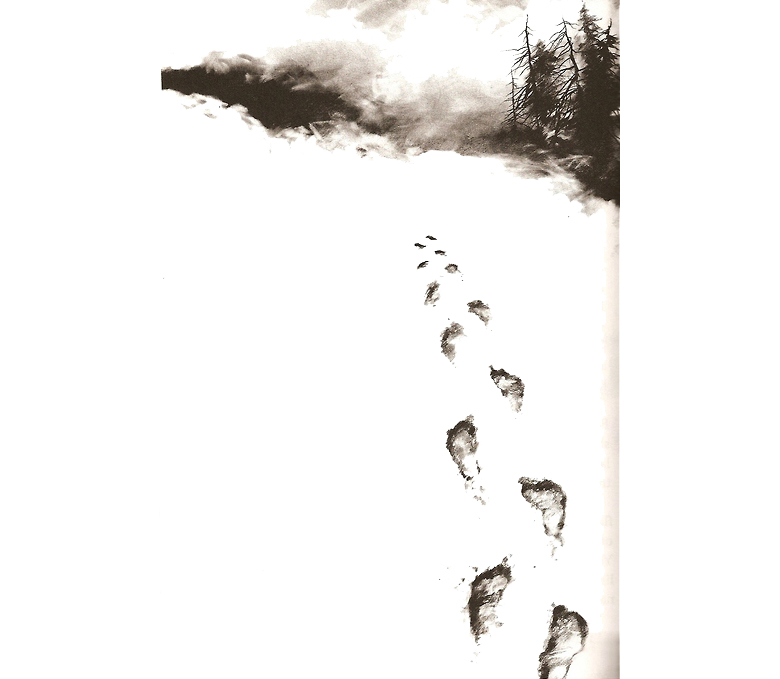
The Wendigo in Books and Stories
While Alvin Schwartz included a story involving the wendigo lore in his Scary Stories to Tell in the Dark, the backmatter divulges that he first heard a version of it from Professor Edward M. Ives of the University of Maine, who in turn first heard it at Boy Scout camp. Many of the most likely places you would have heard such stories growing up would have been places like Maine and other northern regions of America and Canada.
But perhaps the single most prominent telling of the wendigo legend is in Algernon Blackwood’s The Wendigo, a novella first published in 1910. The name Défago comes from that story, and in many ways it has become the blueprint for what people often think of when they discuss stories of the wendigo.
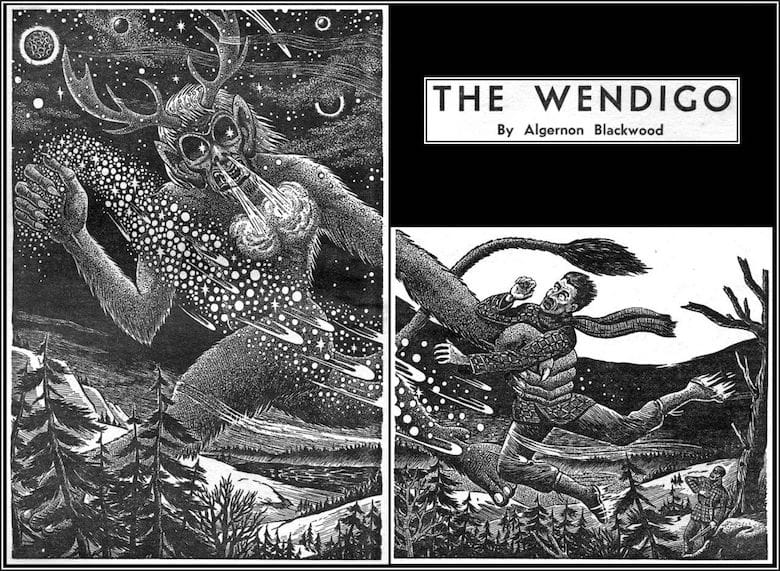
Algernon Blackwood’s The Wendigo is a longer version of Alvin Schwartz’s story, with hunters following snowy footprints, but ultimately only one having encountered the beast. But the experience is mainly left to the audiences imagination, again drawing comparison’s to what Lovecraft has become known for.
“Another amazingly potent though less artistically finished tale [than Blackwood’s The Willows] is The Wendigo, where we are confronted by horrible evidences of a vast forest daemon about which North Woods lumber men whisper at evening. The manner in which certain footprints tell certain unbelievable things is really a marked triumph in craftsmanship.”
– H.P. Lovecraft, The Ithaqua Cycle: The Wind-Walker of the Icy Wastes
Many stories and books have followed since Blackwood’s Wendigo story. Here are but a few of the most popular examples.
- Stephen King’s Pet Semetary. The Indian burial grounds featured in the book along with the path leading to it is in some way haunted by the Wendigo. Whether the Wendigo is behind or responsible for the events of the story is left up for speculation. The protagonist nearly met with the Wendigo, but just barely avoided it.
- Louise Erdrich’s “Windigo”. In this poem the only way to kill a wendigo is to melt its frozen heart.
- The Immortals After Dark series by Kresley Cole. This book series has a version of the Wendigo creature. When bitten or scratched by a Wendigo they become one, similar to the common werewolf trope. They hunger for flesh, like the common archetype of Wendigos.
- The Quiet Boy by Nick Antosca. This is a short story involving an abused boy with the Wendigo legend being used as a potent metaphor. It was adapted into the movie Antlers (2021).
— FOUNDATIONS OF HORROR —
Further explore these subgenres & tropes. more>>
#Scary Stories to Tell in the Dark | #Cannibal horror | #Folk horror | #Monster horror | #Foreign Locations are Scary | #Natural horror

The Wendigo in Movies and TV
A large number of movies and television episodes have dedicated themselves to the Wendigo legend in some way or another. Here is a list.
- Ravenous (1999). In the cult hit horror film, eating the flesh of humans is believed to give you superpowers. The film is set in modern day California, but the Native American who explains the lore specifically says it is an Ojibway wendigo legend.
- Antlers (2021).Based on Nick Antosca’s short story The Quiet Boy, this film follows a school teacher as she suspects one of her students is suffering from personal problems in his home life, resulting in finding the Wendigo as a metaphor for child abuse.
- Wendigo (2001). Patricia Clarkson and Jake Weber star in this lower budget film. While a weekend away at a friend’s country farmhouse, a family experience a fluke accident that sets off a chain of events that alters their lives forever and conjures up the ferocious spirit of the Wendigo, manifested in a young boy’s imagination.
- Grimm (2011-17). In this show Wendigos eat humans and hide their remains under their lair. According to the show, Jeffrey Dahmer was a Wendigo.
- Supernatural (2005-20). A Wendigo appears in the second episode of this long-running series.
The Wendigo in Marvel Comics
The Wendigo can refer to a specific Marvel comic race, primarily a race of villainous characters. Adapting well-known mythical and folklore characters is common in comic books, from Greek and Norse mythology to dragons and witches. So introducing the Wendigo as a character type is not unlike Wolverine or Sabretooth (also animalistic and from the North) does not seem like a stretch for a comic book company like Marvel.
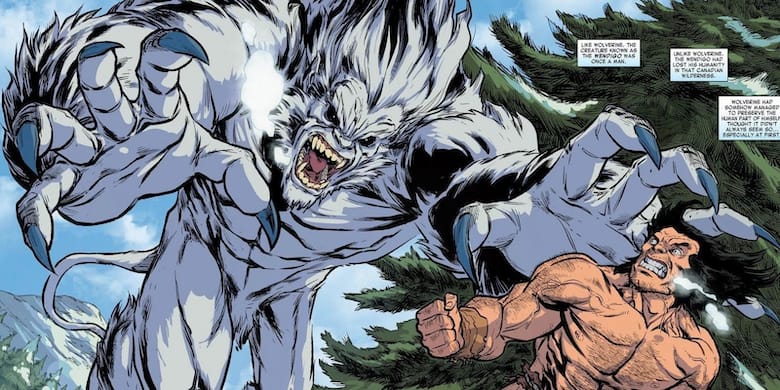
According to Marvel comics, the Elder Gods (or Tanaraq) devised an ancient curse known as the Wendigo, which makes anyone who consumes human flesh in the Canadian wilderness into a huge, fur-covered, humanoid beast with fangs and razor-sharp claws. If a person is bitten by a wendigo and survives, they may also carry the wendigo curse.
The first appearance of a Wendigo in Marvel comics was Incredible Hulk #162 (January, 1973).
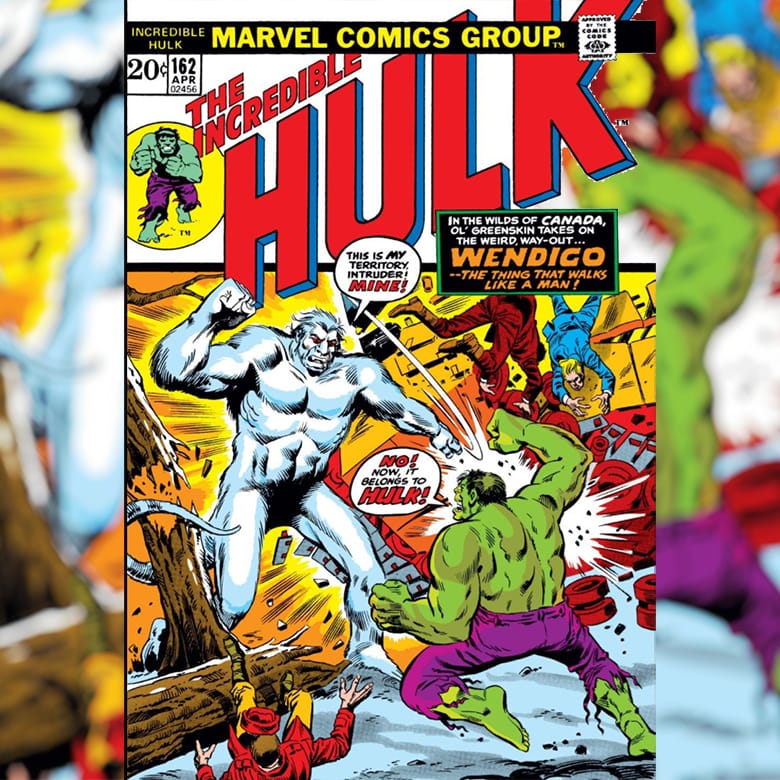
The Wendigo in Games and RPGs
The Wendigo legend or at least the creature it has become in popular culture has been featured heavily in many video games, board games, and role-playing games over the years. Here is a list.
- Diablo II. Wendigo is the official name of the line of monsters that starts with Gargantuan Beast and ends with Yeti in this video game.
- Fallout series. In games such as Fallout 76 and Fallout: New Vegas a wendigo is found as one of many monsters that appear.
- Final Fantasy series. This series features wendigos as monsters or boss monsters in a number of different games, including Final Fantasy V, Final Fantasy VIII, Final Fantasy X, and Final Fantasy XII.
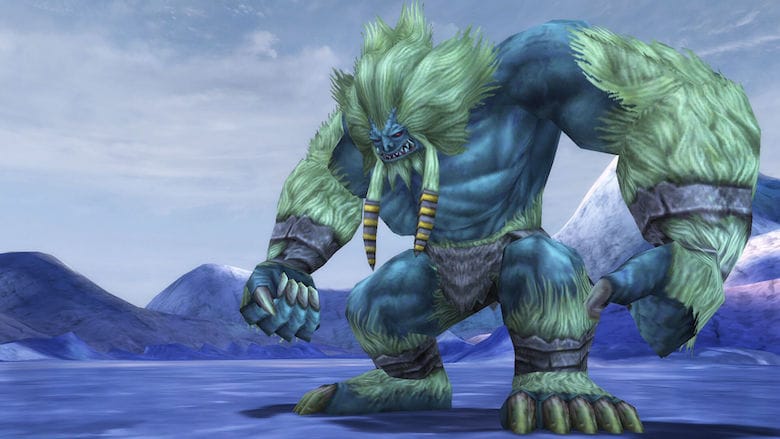
Wendigo Art and Drawings
Along with storytelling, a wealth of wendigo art and drawings have sprung from all corners of the art world and internet. Here are a few artists who have found inspiration from the Wendigo legend.
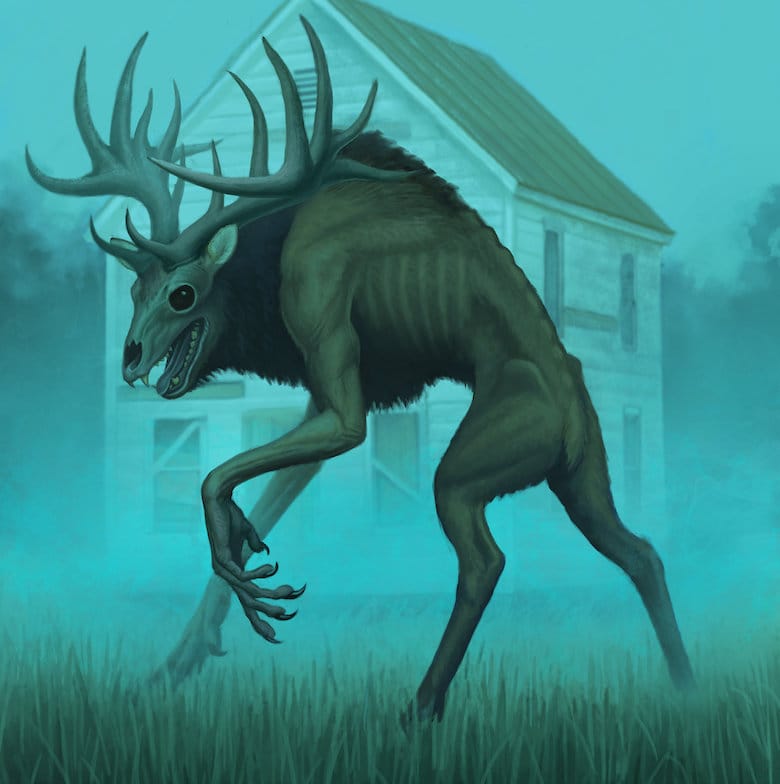
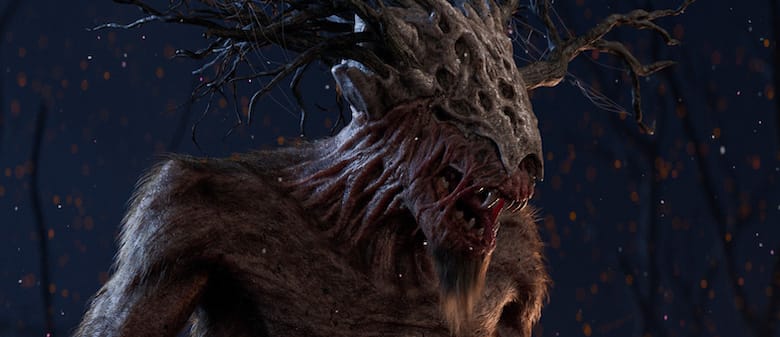
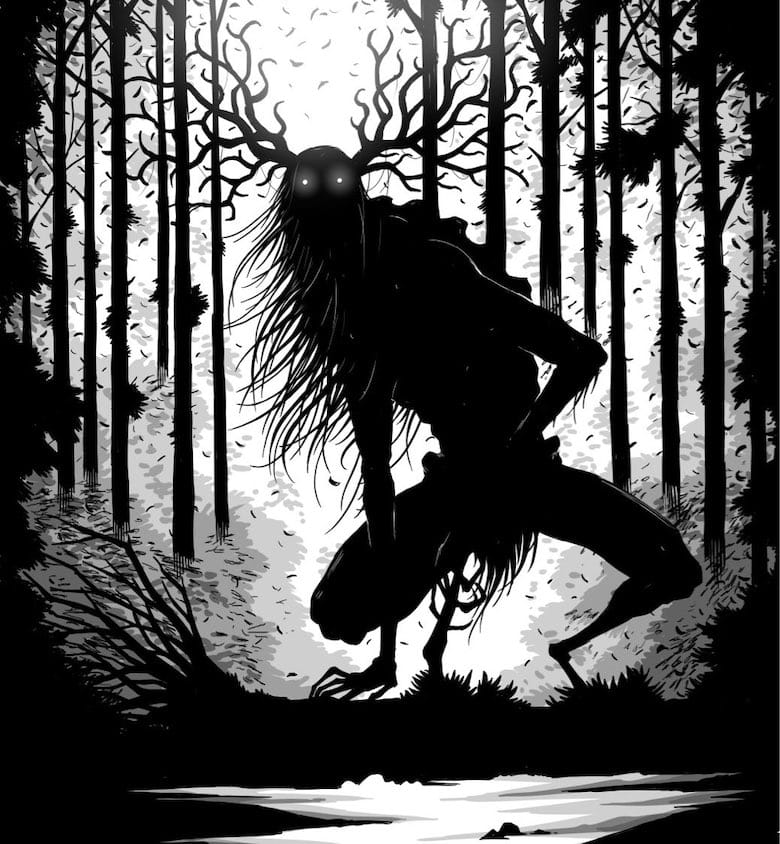
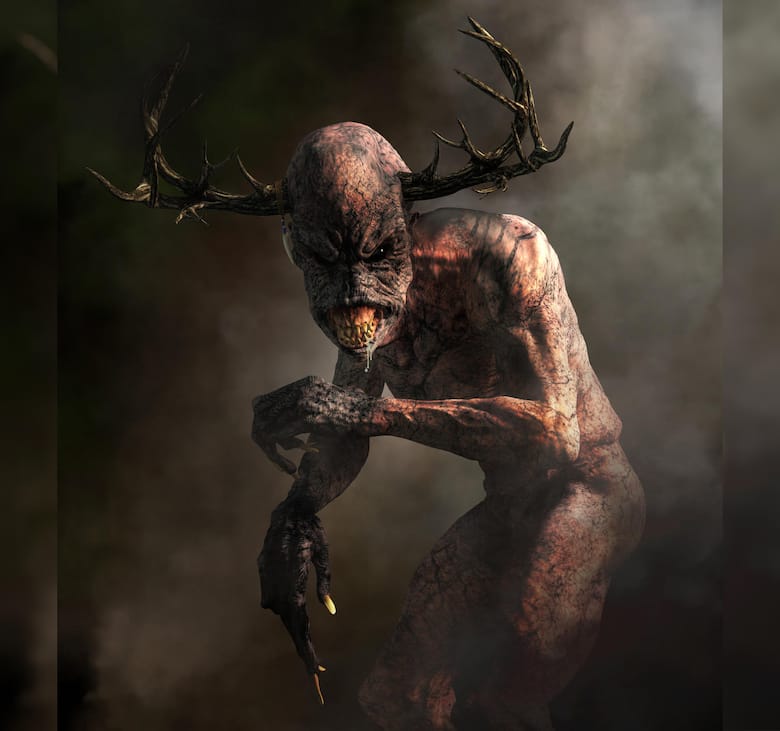
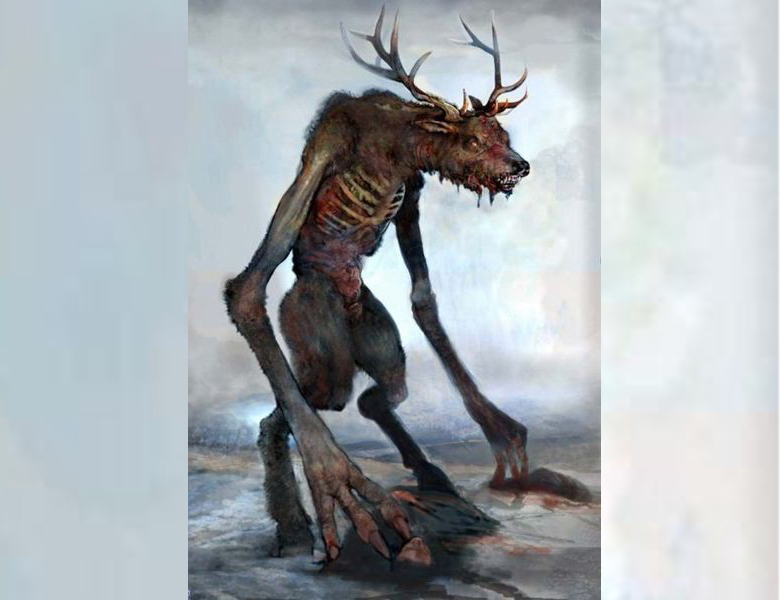
Main art by Adam Duff
Last Updated on August 12, 2022.

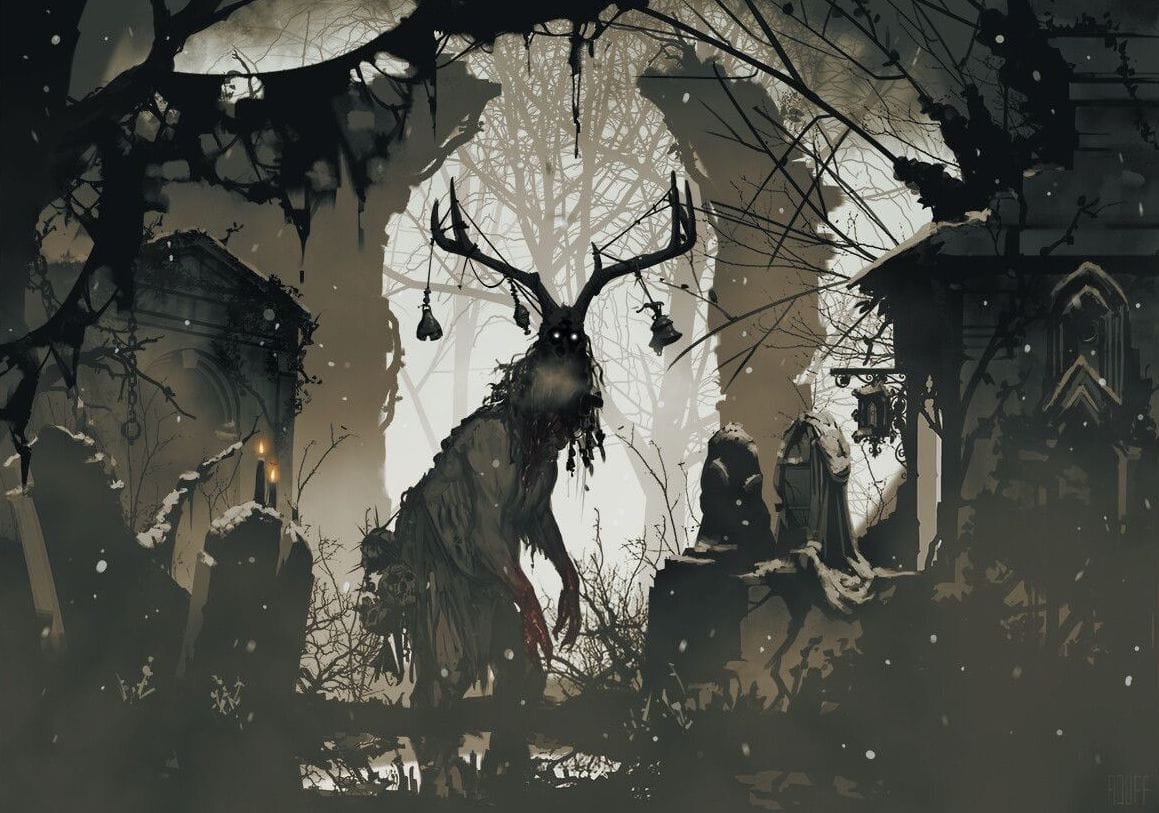
1 Comment